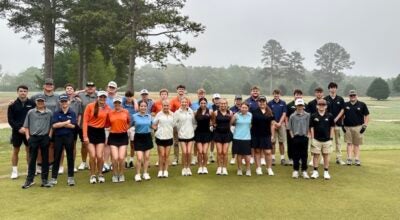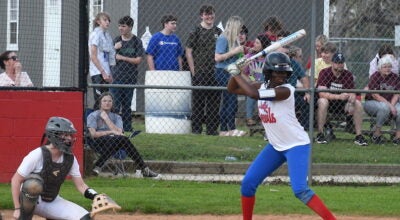Report proves what hunters have always known
Published 6:44 pm Monday, January 19, 2009
As a big pot of venison chili simmers on the stove, I can’t help but marvel at the imaginative – if not delusional – ways some people will try to deter us from consuming wild game.
If you haven’t read about it, a dermatologist in North Dakota claimed there were lead fragments in venison donated to food banks. Unfortunately, it caused a panic, and health officials in North Dakota and Minnesota made the food banks dump the venison. What a colossal waste.
The Centers for Disease Control and Prevention sent a team in to do a study of the hunters in North Dakota to look for lead contamination.
When the National Shooting Sports Foundation saw the results of the CDC study, it was obvious certain groups were using this as a spin tactic.
Ted Novin, NSSF’s Director of Public Affairs, said the results from the study indicate what hunters have known all along.
“The question posed is whether traditional ammunition poses a threat to people who consume venison harvested with that ammunition,” Novin said. “That question has been answered. According to the CDC report, the average blood lead level for hunters tested was lower than that of the average American. So, we feel strongly that the CDC results speak for themselves – that this is a non-issue. I don’t know what other evidence people could want.”
The section of the CDC study to which Novin is referring follows:
“While this study suggests that consumption of wild game meat can adversely affect PbB (blood lead levels), no participant had PbB higher than the CDC recommended threshold of 10μg/dl – the level at which CDC recommends case management; and the geometric mean PbB among this study population (1.17μg/dl) was lower than the overall population geometric mean PbB in the United States (1.60 μg/dl) (CDC 2005). The clinical significance of low PbB in this sample population and the small quantitative increase of 0.30μg/dl in PbB associated with wild game consumption should be interpreted in the context of naturally occurring PbB.”
The somewhat confusing CDC report seems to indicate the minute increase in blood lead levels was caused by the consumption of wild game taken with traditional ammunition, but the study really can’t determine if that is the sole cause because of vocational exposure to lead or lead-related hobbies. Pre-industrial humans had lower blood lead levels, but I consider that a moot point.
NSSF noted that blood lead levels of children under 6 – those who the Minnesota Department of Health deem “most at risk” – had a mean of just 0.88 micrograms per deciliter of blood, which is less than 1 part per billion and less than half the national average. Children over 6 had even lower lead levels. The CDC’s level of concern for lead in children is 10 micrograms per deciliter of blood.
NSSF also noted that Minnesota’s Department of Agriculture conducted a study that showed only 5.3 percent of whole cut venison donations contained “very small amounts” of lead fragments. Hence, 94.7 of the donations had no fragments at all. The CDC study indicated that more than 90 percent of hunters cleaned around the wound channel to ensure there were no bullet fragments.
“Hunters have been taking game with traditional ammunition for over a century, and the CDC results simply confirmed what we already knew – that there is no threat in consuming game harvested with traditional ammunition,” Novin said. “Blood lead levels have been tested in Iowa since 1992, and there has never been an instance of a problem.”
Novin said the response NSSF has received after blowing the whistle on this fiasco has been very positive.
“It’s not really because of us but because of the CDC results,” he said. “When we brought this to the attention of hunters and others through our press release, I would say feedback has been extraordinarily positive.”
As far as Novin is concerned, this is just another example of certain groups trying to deprive us of utilizing the abundance of wild game.
“This is all about scare tactics,” he said. “In a nutshell, anti-hunting groups and anti-gun groups have realized they can’t get an overnight ban, so they’re trying every trick in the book to scare hunters and gun owners.”
As far as my personal experience with venison consumption, I’ve been eating venison all my life. I have had no adverse reaction to consuming venison, except for a few instances that were self-imposed. For example, my wife did ask me how many paint chips I had munched on as a kid when she walked into the house and discovered I had re-arranged her kitchen without her blessing.
Trust me on this one guys. No matter how much kitchen space the microwave takes up, just cook the venison chili. Don’t dare mess with a woman’s kitchen without explicit permission.
For those who missed it, here’s my recipe for venison chili:
¼ cup olive oil
2 large cloves garlic, minced
4 large onions, chopped
2 large green peppers, chopped (optional, my girls don’t like green peppers)
4 pounds ground venison
2 six-ounce cans of tomato paste
3-4 cans diced tomatoes
3 ounces chili powder
1 tablespoon salt
4 16-ounce cans of kidney beans
1-3 dashes of cayenne pepper
1-3 dashes of garlic salt
2 bay leaves
1 teaspoon liquid crab boil (This is my secret ingredient)
Heat olive oil to large stock pot with heavy bottom and sweat garlic, onions and pepper until tender. Add venison and brown for 10 minutes over medium heat. Add tomatoes, tomato paste, chili powder, cayenne pepper and salt. Mix together and then add bay leaves. Bring to boil and then simmer for 2-3 hours.
Serves 10-12






